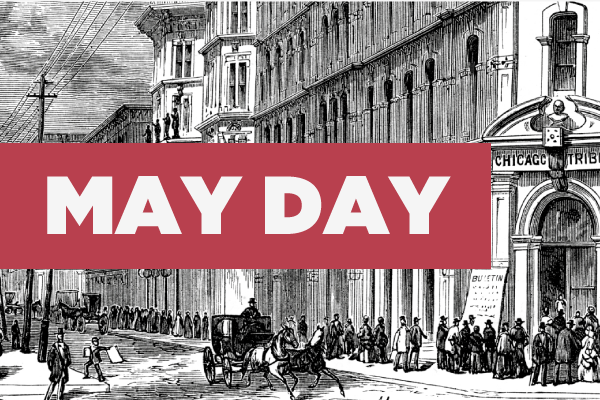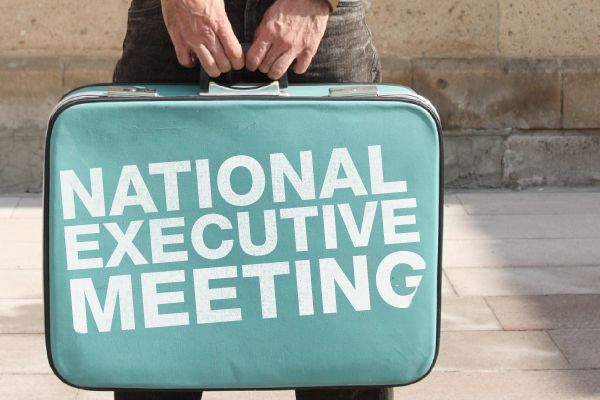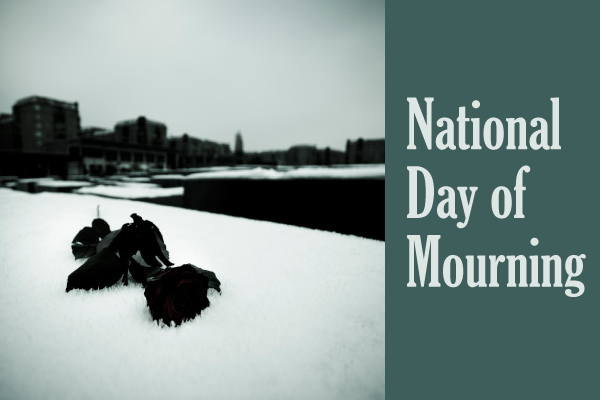
On May 4, 1886, a peaceful protest by labour activists in Chicago suddenly turned violent. A bomb was thrown. The police reacted by firing indiscriminately into the crowd. At the end of the day, the death toll included seven policemen and four workers; only one death was linked to the bomb.
According to the late historian William J. Adelman, the Chicago Haymarket Affair is the most influential event in labour history. Alderman believed that few textbooks bother to thoroughly explain the incident – and many leave out crucial facts.
“The real issues of the Haymarket Affair were freedom of speech, freedom of the press, the right to free assembly, the right to a fair trial by a jury of peers and the right of workers to organize and fight for things like the eight-hour day,” wrote Adelman.
A few days earlier, on May 1, 80,000 workers had been demonstrating for eight-hour workdays; something that was already law for federal and state workers, but that was ignored by employers. According to Adelman, employees were forced to sign waivers of the law as a condition of employment.
The next day, 35,000 peaceful protesters showed up. But on May 3, Chicago police began to attack picketing workers. In response, a protest was held on May 4. Adelman notes that this protest had been approved by the city’s mayor – something that’s often overlooked. In fact, the pro-union mayor had been in attendance.
“The Haymarket meeting was almost over and only about two hundred people remained when they were attacked by 176 policemen carrying Winchester repeater rifles. […] Then someone, unknown to this day, threw the first dynamite bomb ever used in peacetime history of the United States. The police panicked, and in the darkness many shot at their own men. Eventually, seven policemen died, only one directly accountable to the bomb. Four workers were also killed, but few textbooks bother to mention this fact.”
The events that followed are even more mind-boggling. Martial law was declared across the nation; the calamity was used as an excuse to crush the labour movement.
Eight men, “representing a cross section of the labor movement”, would be tried and convicted. Seven were sentenced to hang; one received a 15-year sentence.
Among those sentenced to death was Louis Ling; a 21 year-old carpenter who stood accused of throwing the bomb, despite having an alibi placing him over a mile away when the bomb went off.
“The judge himself was forced to admit that the state’s attorney had not been able to connect me with the bomb-throwing,” said Lingg in his final speech. “The latter knows how to get around it, however. He charges me with being a ‘conspirator’. How does he prove it? Simply by declaring [an international anarchist political organization] to be a ‘conspiracy’. I was a member of that body, so he has the charge securely fastened on me. Excellent! Nothing is too difficult for the genius of a state’s attorney!”
Ling was later found dead in his cell, having committed suicide the day before his scheduled execution.
Oscar Neebe, the accused who received the 15-year jail sentence, famously told the court that he was sorry not to be hung – that he would rather die suddenly than be killed slowly for a crime he didn’t commit.
“They found a revolver in my house, and a red flag there,” said Neebe after receiving his sentence. “I organized trade unions. I was for reduction of the hours of labor, and the education of laboring men, and the re-establishment of the Arbeiter-Zeitung—the workingmen’s newspaper. There is no evidence to show that I was connected with the bomb-throwing, or that I was near it, or anything of that kind.”
Seven years would pass.
Shortly after taking office in 1893, Illinois Governor John Peter Altgeld issued pardons for Neebe and two other men whose sentences had been commuted to life imprisonment.
In his reasons for pardoning, Altgeld didn’t mince words. He asserted that the jury had been carefully selected in favour of conviction, that the defendants had not been proven guilty of the crimes for which they were charged and that the judge did not grant a fair trial.
Altgeld concluded that there was no conspiracy to commit murder: “if the theory of the prosecution were correct, there would have been many bombs thrown; and the fact that only one was thrown shows that it was an act of personal revenge.”
The governor placed the blame squarely on Police Captain John Bonfield, a man who “could not resist the temptation to have some more people clubbed” as soon as he heard the mayor had left the gathering.
He noted that the meeting was over; that the crowd was already dispersing.
“Had the police remained away for twenty minutes more, there would have been nobody left there.”
“Capt. Bonfield is the man who is really responsible for the death of the police officers.”
Altgeld also noted that much of the evidence presented at trial had been fabricated. He accused some overzealous police officials of terrorizing “ignorant men by throwing them into prison and threatening them with torture if they refused to swear to anything desired.”
The same police officers were said to have offered money and employment to those who would agree to commit perjury.
In July 1889, an American delegate at a labour conference in Paris asked that May 1 be declared International Labor Day in memory of the men who lost their lives because of the Haymarket Affair. Today, more than 80 countries celebrate International Workers’ Day on May 1.
But, in the United States, it’s not the official holiday recognizing the labour movement.
In 1894, after stifling a railroad strike, President Grover Cleveland was trying to score some points with the union folks. That’s when he decided to dedicate a federal holiday “in honour of the working man”.
But President Cleveland didn’t choose May 1; he was worried that it “would encourage rabble-rousing in commemoration of the Haymarket Riot.”
Big Steve (as some used to call the president) chose instead the first Monday of September; a day that Canadians had been celebrating as their Labour Day, in commemoration of the Toronto Typographical Union’s strike for a nine-hour workday.











